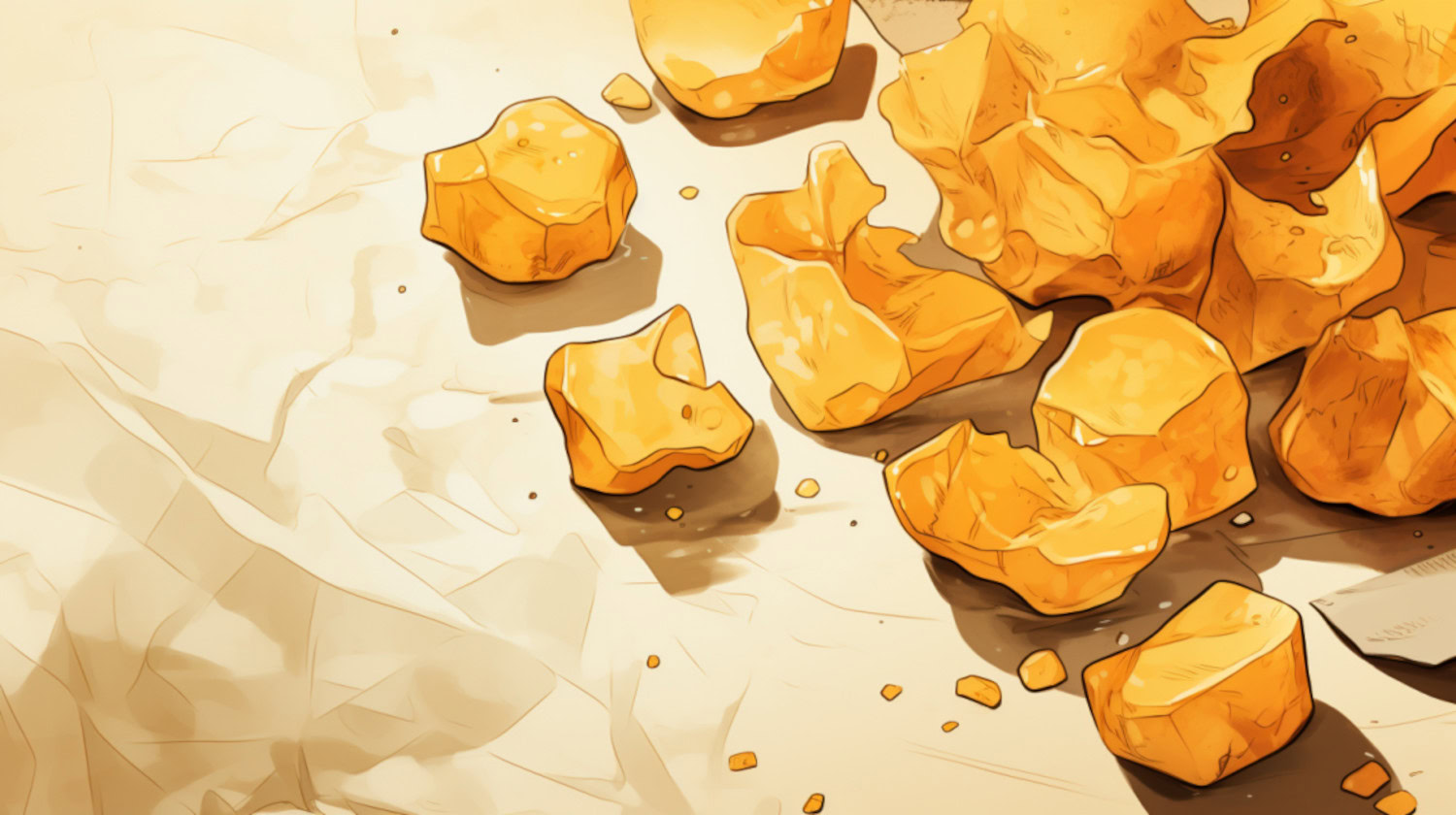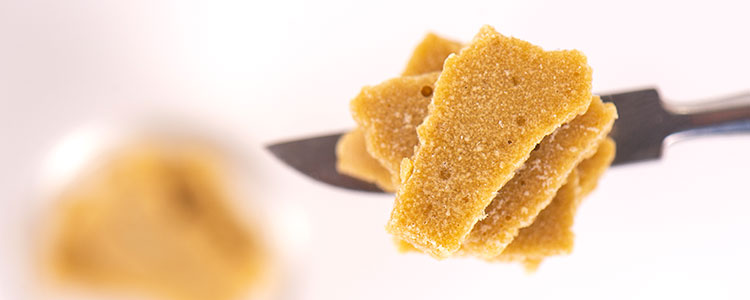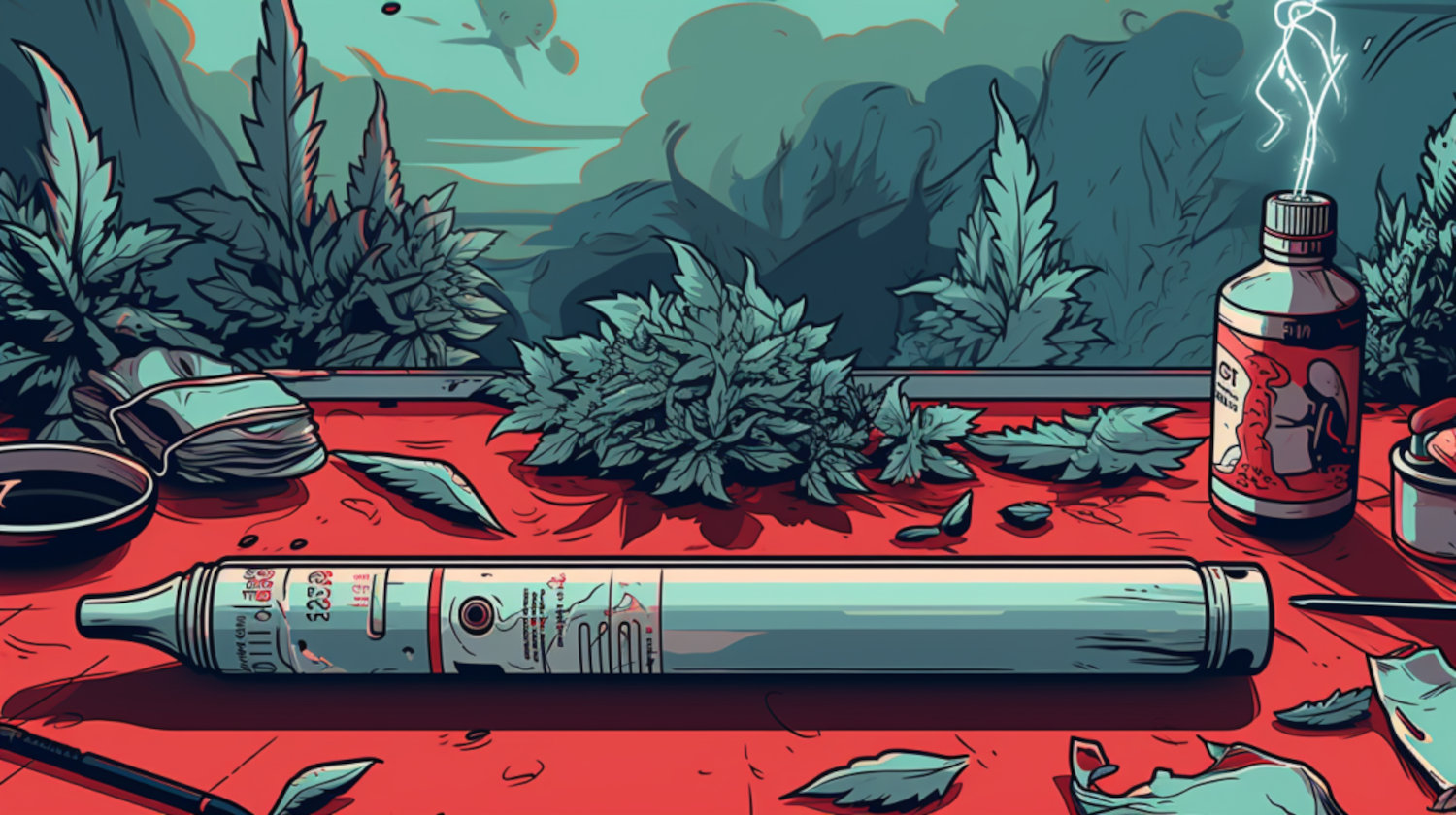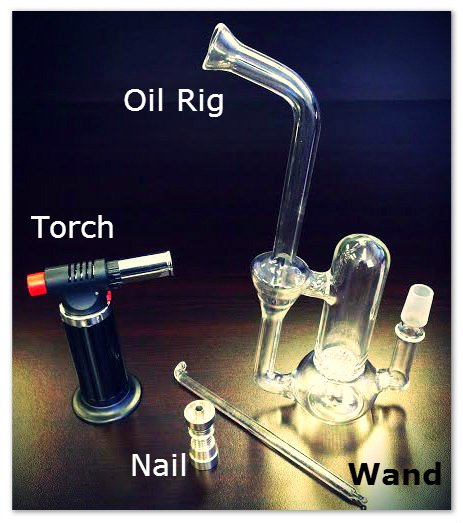Since humans first began experimenting with cannabis, consumers have broadened their horizons in terms of consumption methods. Concentrates are emerging as some of the most popular segments of the market. So much so that analysts envision the global extract industry to yield $31.5 billion by 2028.
Dabs stand out as some of the most popular extracts on the market. This consumption technique involves “dabbing” a small glob of hot, oily, concentrated cannabis liquid to promote the evaporation process and transform it into a gas. Examples include oil, budder, wax, or shatter. Resistant quartz or metal nails serve as the surface for the cannabis concentrate, which users vaporize at temperatures ranging from 400℉ to 600℉. Although dabs contain 70% to 90% THC (more than plant matter), dabs can sometimes be inefficient.
This is where dab reclaim comes in – a method of reclaiming the leftovers that accumulate inside your rig to cherish every single cannabis compound.
What is Dab Reclaim?
Dabs — sometimes known as BHO (butane hash oil) — comprise a hefty chunk of the cannabis extracts market. These potent products are legally on sale at most of the 15,000 dispensaries in the United States. The popularity of dabbing stems from the safety, simplicity, purity, and potency of this consumption method, which involves vaporizing concentrates at high temperatures for rapid onset effects. Consumers also favor the bioavailability of this consumption method, which hovers in the realms of 10% to 35%.
After a dabbing session, a cold, solid, and sticky residue forms on the dab rig’s base and walls. Meaning that you may lose some of your valuable cannabinoids. With a dab reclaim catcher, you can avoid waste and utilize the re-condensed cannabis concentrates to your advantage.
Dab reclaim often exhibits a darker appearance than the original extract, with extracts being lighter and saturated with an abundance of goodness. Observing the neck, joints, and percs of your dab rig is the best way to detect reclaim, which initially appears as an off-yellow-colored liquid. The more frequently you dab, the thicker and darker the reclaim, so it’s best to clean your glass dab rig regularly.
The majority of cannabis connoisseurs are less enthused by the aroma and flavor of pipe reclaim than dab rig reclaim. Consumers who use a water pipe to inhale their cannabinoids will notice a golden layer of cannabis residue gradually slide into the water, resulting in yellow-orange floating balls. If you’ve accumulated some of this sticky substance after dabbing, you may or may not want to reuse the residue.
Advantages of Dab Reclaim

The flavor of dab reclaim is not as strong as a normal dab, since it doesn’t contain as many terpenes. However, dab reclaim will likely still give you a slight buzz. Don’t expect it to be as enjoyable as the real deal, though. Smoking dab reclaim is an option for consumers who don’t want to waste their product before purchasing their next cannabis extract.
Also known as “cannabis reclaim,” this sticky substance is composed of cannabinoids, terpenes, and various other plant compounds contained in the original concentrate.
Some factors that set reclaim dab consumption apart from other concentrated cannabis options:
- Dab reclaim is free - Reclaim is a dab rig byproduct, meaning that it is essentially free to use. You can enjoy a pungent dose of THC without paying extra to top up your stash.
- There’s no waste - Make use of every single particle of dab reclaim to ensure that you get the most out of your cannabis supply.
- The THC levels are usually high - Although there is a lack of tests proving the THC percentage of dab reclaim, the team at MCR labs suggests that it is fairly potent, with samples testing between 40% and 60% THC for higher-end reclaim. Low-quality reclaim may contain around 30% THC, but this varies depending on the strain.
- It is twinkling with CBD - This non-intoxicating element of cannabis offers a host of potential benefits. After all, CBD is a potential anxiolytic and analgesic.
- Swift stash supply - Should you be unable to visit a dispensary to top up your stash, your rig may be able to provide it. Since dab reclaim still contains plenty of active cannabis compounds, you will certainly feel the effects, though milder than the original concentrate.
Drawbacks of Dab Reclaim
Some cannabis consumers prefer not to consume dab reclaim, with it not being a fresh element of the plant. Reclaim is a byproduct of cannabis concentrates and extracts, so it is considered a last resort for many seasoned smokers. If you have a generous supply of cannabis and are not desperate, you may want to forego dab reclaim. The sticky residue can get you high, but it will not be pure or have a flavorful taste.
THC levels rest at 60% in some types of dab reclaim, but the terpene content diminishes once the concentrate reaches the reclaim stage. Terpenes play an important role in the entourage effect, which grants users the pleasure of a more intense and nourishing high. Plus, terpenes provide cannabis with a tantalizing taste. Therefore, dab reclaim is not as kind to the taste buds as pure extracts are.
Is dab reclaim safe and worth a try? There are potential drawbacks discerning consumers should be aware of.
- Inconsistent high - Numerous factors may influence the potency of dab reclaim, such as the quality of the cannabis you purchase and strain type. While the potency of dab reclaim may be up to 60%, some reclaim contains significantly less. As a result, you may feel let down by the experience.
- Smoking byproducts - Certain health risks are associated with smoking dab reclaim. As a byproduct of cannabis concentrate, there is no guarantee that you are getting ‘X’ amount of THC, terpenoids, or flavonoids. The quality of the specific substance you inhale depends on how frequently you dab and what extract you dab in the first place. Byproducts like butane and tar may be concentrated in the reclaim once you vaporize the concentrate. While this may not cause an instant disruption to your health, it could in the long run.
- Chemical solvents - Butane and propane are commonly used to make cannabis concentrates. Traces of these chemical solvents often exist in the dab reclaim, thus exposing your body to unhealthy toxins. To limit your consumption of solvents when using dab reclaim, be sure to purchase solventless cannabis concentrates and avoid any extract made with a hydrocarbon, like butane.
- Unwanted side effects - Dab reclaim, not unlike smoking cannabis stems, may deliver a few undesirable side effects. Difficulty breathing, headaches, and sore throats are some of the most common side effects of smoking dab reclaim. This is a lot harsher on the lungs than buds and concentrates. High-quality products ensure smooth inhalation, minus the uncomfortable head fuzz, which is why many people choose to discard their reclaimed wax instead of smoking it.
How to Use Dab Reclaim

If you decide to use dab reclaim, there are a few ways to collect it. Some dab rigs are “reclaimer-ready” and allow you to collect the reclaim with ease. Whichever method you choose, make sure you are well-hydrated beforehand and in a well-ventilated space to ensure the best experience.
Here are a few dab reclaim methods to consider.
Solvent Dab Reclaim
Using solvents to extract cannabis’ potent naturally occurring compounds from the flower is not the only way of using these chemical solutions. You can also use solvents to dissolve cannabis dabbing reclaim. Food-grade ethanol is the most reliable choice for solvent dab reclaim, and individuals should avoid using isopropyl alcohol.
To perform solvent dab reclaim successfully, you will need:
- Solvent
- A secure cup or container
- Fan
Here’s a three-step process for this method:
- Pour a small amount of solvent into the rig and swirl it around.
- Upon observing the dissolved reclaim, pour it into the cup or container.
- Position the reclaim near a fan. Since alcohol evaporates in low temperatures, the solvent will metamorphose into crystallized reclaim after a few hours.
Solvents should be used cautiously, considering that small amounts of solvent may linger in the reclaim if you don’t employ purification techniques.
Heat Dab Reclaim
Applying heat to the underside of your dab rig is an effective way to loosen the dab reclaim and separate it from the device itself. Simply repeat the solvent process, but substitute the solvent for hot water.
To perform heat dab reclaim successfully, you will need:
- Hot water
- Non-absorbent, heat-proof material
- Blow torch
Here’s a two-step process for this method:
- Turn the rig upside down and position it carefully over a non-absorbent, heat-proof piece of material, such as a baking tray or a heat-safe silicone mat.
- Apply intense heat using a blow torch to the underside of your dab rig. When the reclaim becomes loose, it will dislodge from the walls.
Pay attention to which parts of the dab rig you heat; some parts, including the bowl and pipe, will not withstand heat exposure very well.
Reclaim Catcher
A dab reclaim catcher simplifies the process of dabbing reclaim. These small gadgets connect to the rig and harness all of the reclaim in a heat-proof container. Heat or solvents are not necessary when you use a reclaim collector to salvage the remnant of decarb wax. All you need to do is disconnect the reclaim collector piece and empty the contents. You can apply the substance to your dab pen and use it directly.
Tips for Using Dab Reclaim
Fans of dab reclaim are fond of its fairly long shelf life. After using a dab reclaim collector, you can store the reclaim for months. Once you’ve finished dabbing reclaim, make sure to store the leftover substance in an airtight container in a cool space.
There are a few ways to use dab reclaim.
Smoke It
After collecting your dab reclaim, you can smoke it right away. Either pack a bowl and glaze it with some reclaim or scatter some over a joint. However, be prepared for harsh hits. This is not a tasty high or the kind you’d usually like to share with friends.
The poor terpene content and presence of byproducts like tar may taste sour. For a more gratifying experience, opt for fresh dispensary-bought nugs of your favorite strains that retain all their goodness, including those beloved terpenes.
Eat It
Can you eat wax? Due to the decarboxylation that reclaim undergoes during the dabbing session, dab reclaim produced from wax is ready to eat. Eating your dab reclaim is often recommended over smoking, as it will not irritate the lungs and can serve as the main ingredient for cannabis-infused foods.
You don’t even have to decarb it - the dab did that for you. Simply sprinkle it on top of your food for a dose of mind-melding indulgence. You could infuse it into a sushi roll sauce, drizzle it over some fresh salmon, or blend it with a simple lemon cake recipe.
Note: THC transforms into CBN when it degrades, including after heating or decarboxylation, so it is not wise to decarb reclaim before using it for edibles as it can result in a loss of potency. Freezing dab reclaim into a popsicle is also possible if you fancy a refreshingly cool cannabinoid-rich treat.
Pay attention to dosage if you have a low THC tolerance. The THC content of reclaim dab residue can sometimes reach 60%.
The information in this article and any included images or charts are for educational purposes only. This information is neither a substitute for, nor does it replace, professional legal advice or medical advice, diagnosis, or treatment. If you have any concerns or questions about laws, regulations, or your health, you should always consult with an attorney, physician or other licensed professional.




